A new report explores API maturity by surveying 600 senior IT and line-of-business decision-makers through the lens of four key areas of focus: security, governance, monetization, and productization.
Their answers give a vivid portrait of the state of API maturity of organizations in 2024.
One encouraging finding is that today’s leaders are grasping the vision and bringing APIs to market. But lost APIs and lack of governance are putting the brakes on this momentum.
Let’s dive into some of these key results and what they mean for you.
Understanding API maturity
API maturity refers to the development stages and levels of sophistication that an API undergoes as it evolves from a basic, functional interface to a robust, scalable, and well-integrated business asset within an organization.
Achieving higher levels of API maturity can help enterprises unlock greater efficiency, innovation, and business value. Axway Catalyst Emmanuel Methivier dove deeper into the levels of enterprise API maturity a little while ago with this blog.
Given the data brought to light in this new report, Brian Otten, VP of Axway Catalysts, draws the following key takeaway: organizations still need to get their API house in order.
“It’s about getting that visibility and control over all your assets, so you know what you have and you can put in place automated processes to make sure it’s all secured,” says Brian.
“Once you have that foundation laid down, you’ll have APIs you can trust, and you can finally unlock the growth you were hoping for – you’re ready to productize and monetize APIs the right way.”
What is the current state of enterprises’ API maturity?
Some baseline data from the survey shows that enterprises are increasingly embracing a variety of API styles and deployment patterns. For example, most enterprises are deploying APIs in the cloud, and close to a third of APIs today are hosted in a multi-cloud deployment.
Most companies began their API journeys by building a few APIs to expose a data set internally. Now, organizations are starting to open their ecosystems and expose APIs to external audiences.
Most APIs being used by an enterprise (57%) are now exposed externally.
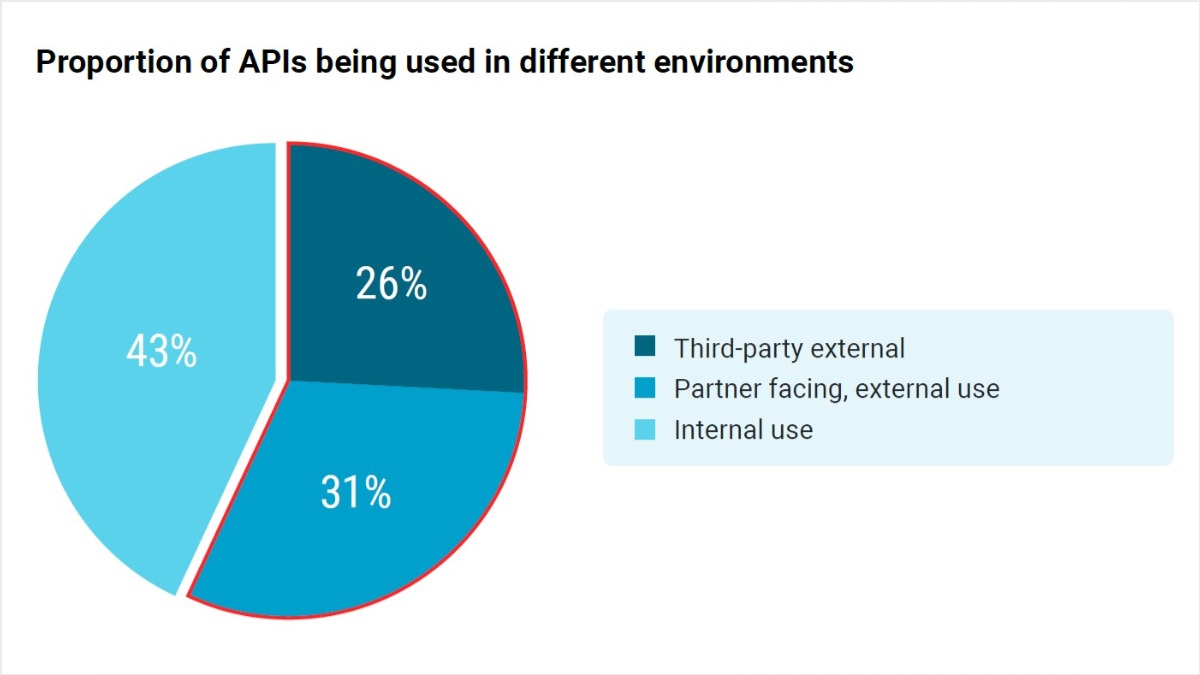
This trend is unlikely to reverse; almost all of those surveyed (98%) anticipate the number of APIs used by their organization to increase over the next 12 months.
API security and governance are holding back organizations
As they grow their API ecosystem and open it up, enterprises identify three top API governance challenges:
- Maintaining accurate inventory of APIs
- Monitoring all APIs for compliance, anomalies, or attacks
- Accommodating new API styles
As we mentioned earlier, the sheer amount of APIs that enterprises admit to not knowing about is concerning:
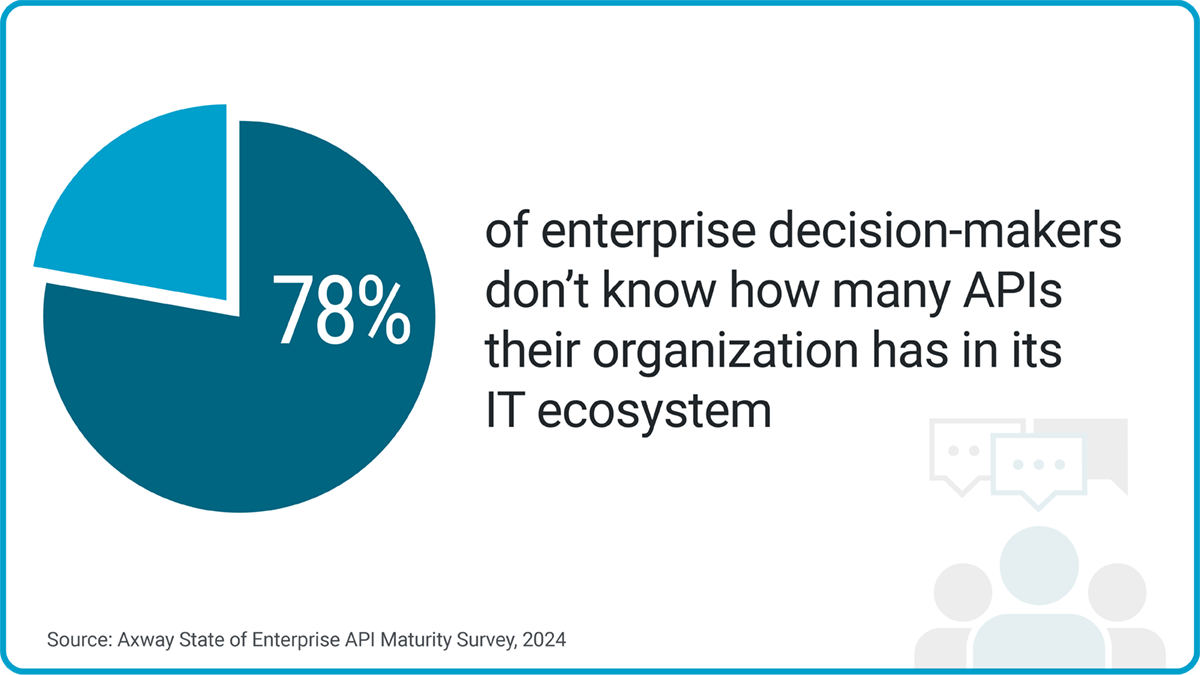
Even when APIs are known and managed, the way they are managed – and who is responsible for what – seems to be rather fractured.
Only 1/3 of APIs are being managed by a centralized operations team, while the rest are left to individual internal teams or managed by external parties.
The methods for managing APIs are also piecemeal – a mix of automated and manual cataloging:
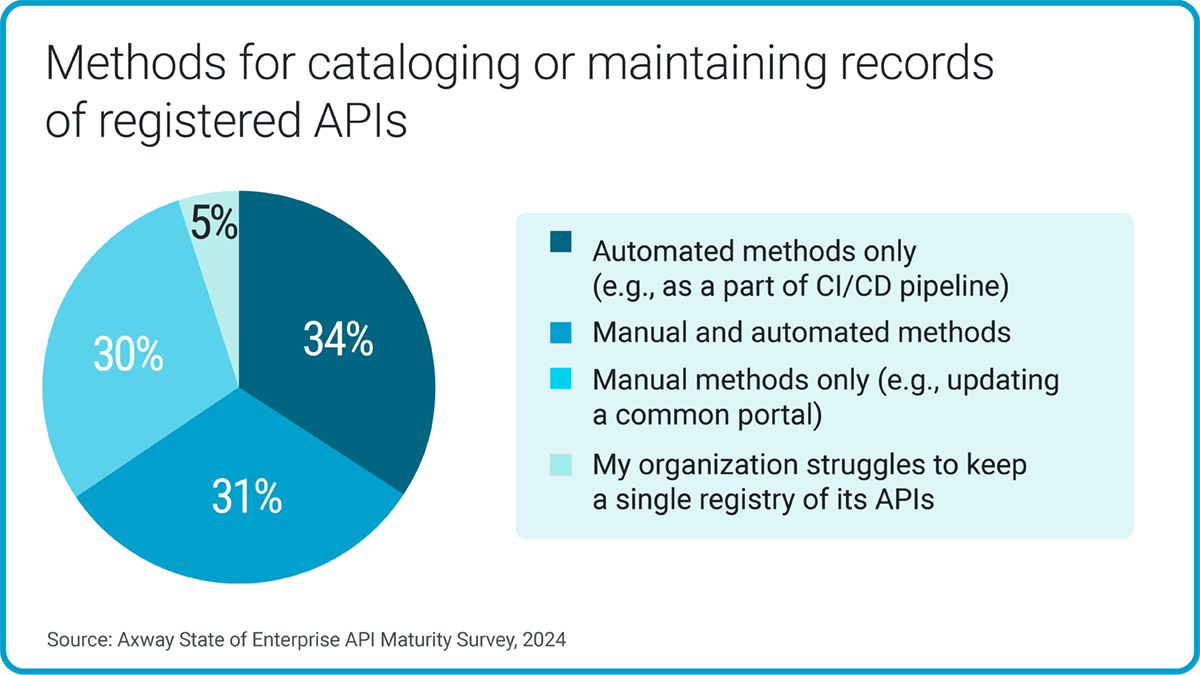
Watch a Q&A video discussing how as the number of APIs grows, so too does the challenge of managing and securing these assets.
Enterprises are treating APIs as products
Despite unresolved problems around API security and governance, many enterprises are pushing their API strategy forward, and they seem to have the right ideas: they’re stepping up APIs from technical interfaces to true digital products.
This is manifested, for example, in the number of enterprises dedicating API product managers for their key digital assets.
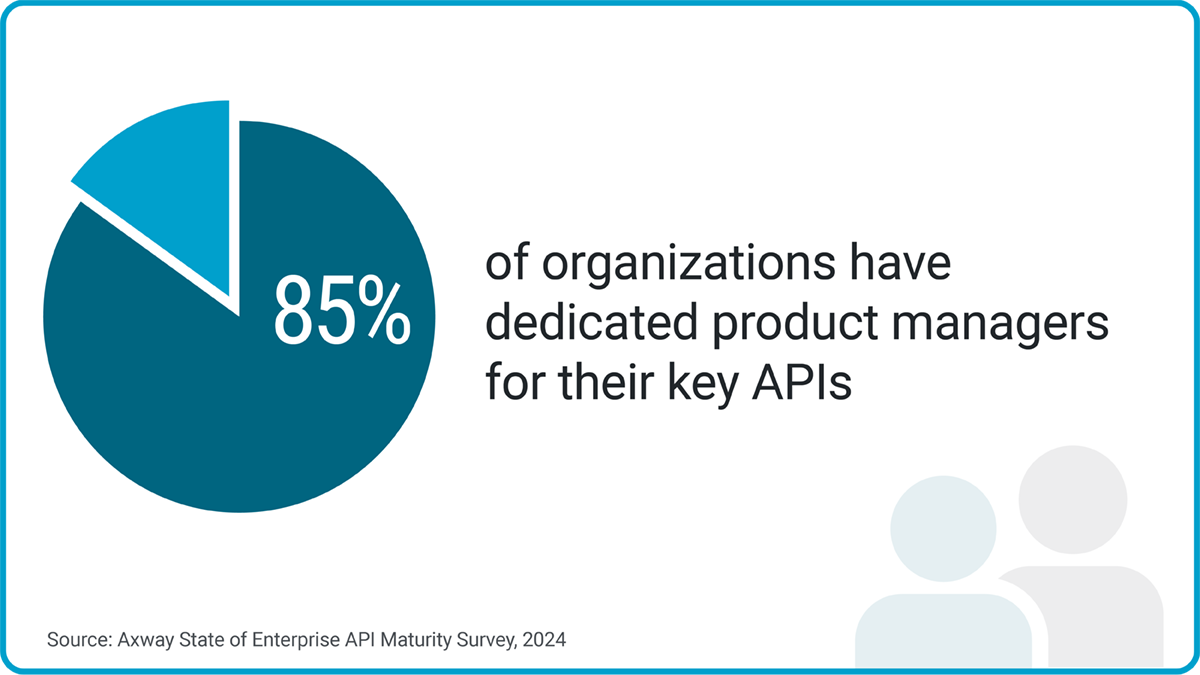
As Brian Otten often describes, an API product is built around business capabilities. This might mean bundling multiple technical interface APIs to support a business function, allowing you to create an API product that solves specific needs.
“An API product mindset considers people first,” explains Brian.
“How are consumers going to use the APIs? You can strategically link APIs and wrap a value proposition, documentation, and subscription plans around the products you develop.” Read more
Enterprise priorities for building API products reflect a good understanding of these principles:
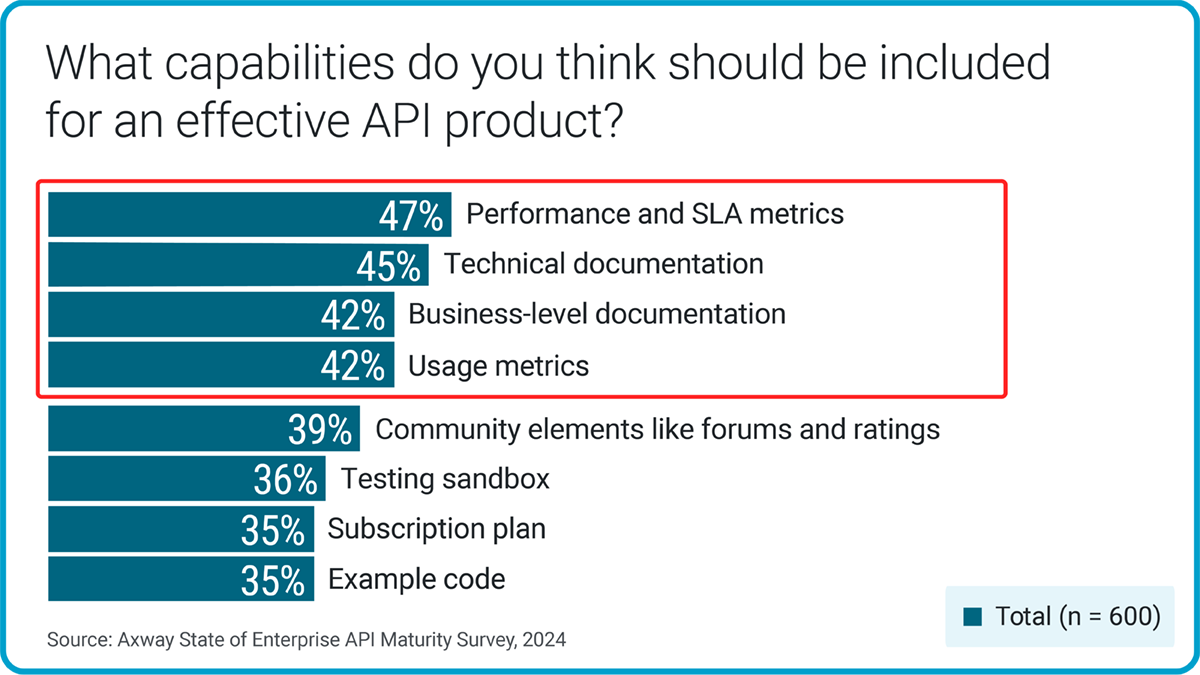
Building the right APIs for business use cases is also an important factor in treating APIs as products – and it emerges as a top challenge that organizations face with tracking and measuring API metrics.
Meanwhile, decision-makers agree that there is insufficient alignment between IT and line of business on how to report and track API success.
How to measure – and improve – your API maturity level
Issues around API governance and security will affect organizations’ ability to drive results and revenue with their APIs. So, while it is encouraging that 55% of respondents say they are directly monetizing APIs as part of their external ecosystem, issues may arise when they are ready to go to market.
So, how to move forward along your API journey when faced with these sorts of complexities?
The report offered some clear consensus on how enterprises could gain better oversight of their APIs: 95% agree that a centralized API catalog would improve the governance of APIs.
Indeed, unmanaged APIs are the security risk many enterprises don’t even know threatens to put the brakes on their hard-earned momentum. It is urgent for enterprises to address these risks, so they’re in the best position to then productize and monetize their APIs securely.
See also: Remediate Your Lost APIs [Zombie APIs, Shadow APIs, Legacy APIs]
Finally, an important issue that arose was that of alignment between IT and line-of-business.
From ownership and governance to how to take these APIs to market, respondents agreed that stronger alignment between the two could make a real difference:
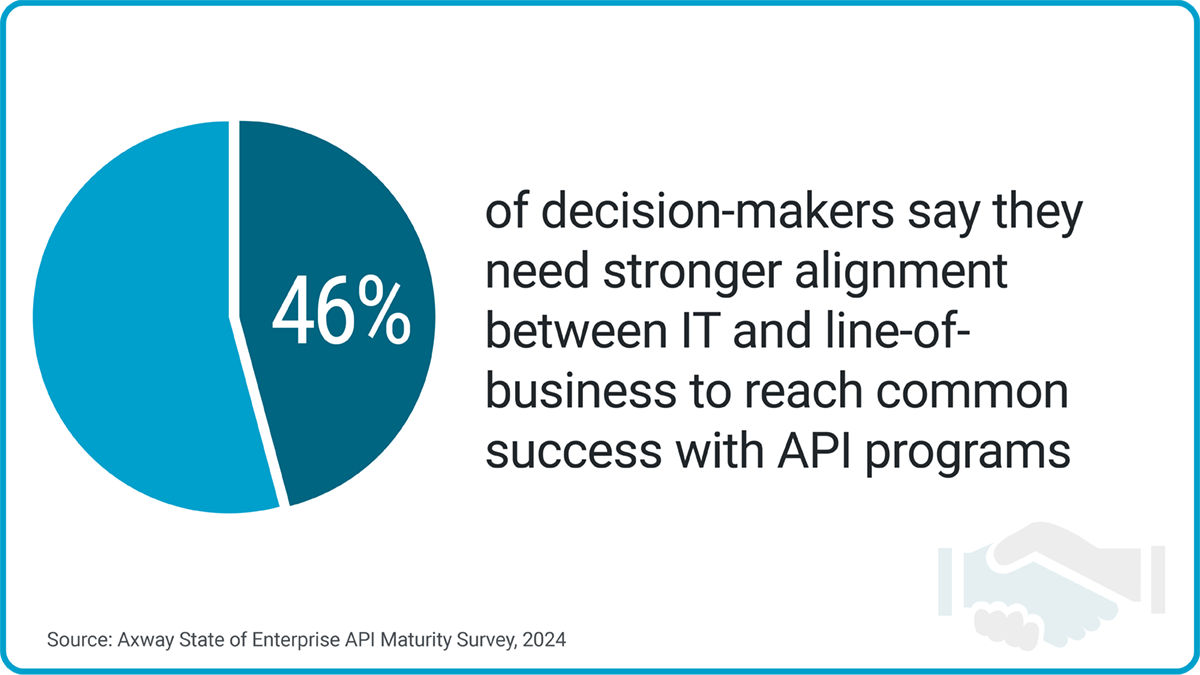
Amplify Engage brings business and IT together based on business outcomes and offers common metrics for all API products regardless of type, deployment, or platform. And with a federated API management platform, you can enable a centralized operation team.
This new report offers a helpful perspective on where you stand compared to other enterprises today. It highlights key issues enterprises are struggling with, where they are succeeding, and where they should focus their energies next.
Axway stands ready to help you overcome the challenge of securing and managing all your APIs in one place by enabling the full visibility and control needed to reduce your organization’s risk.
Download this report on the state of enterprise API maturity today to see where you stand and gain data-driven insights for your strategy.


